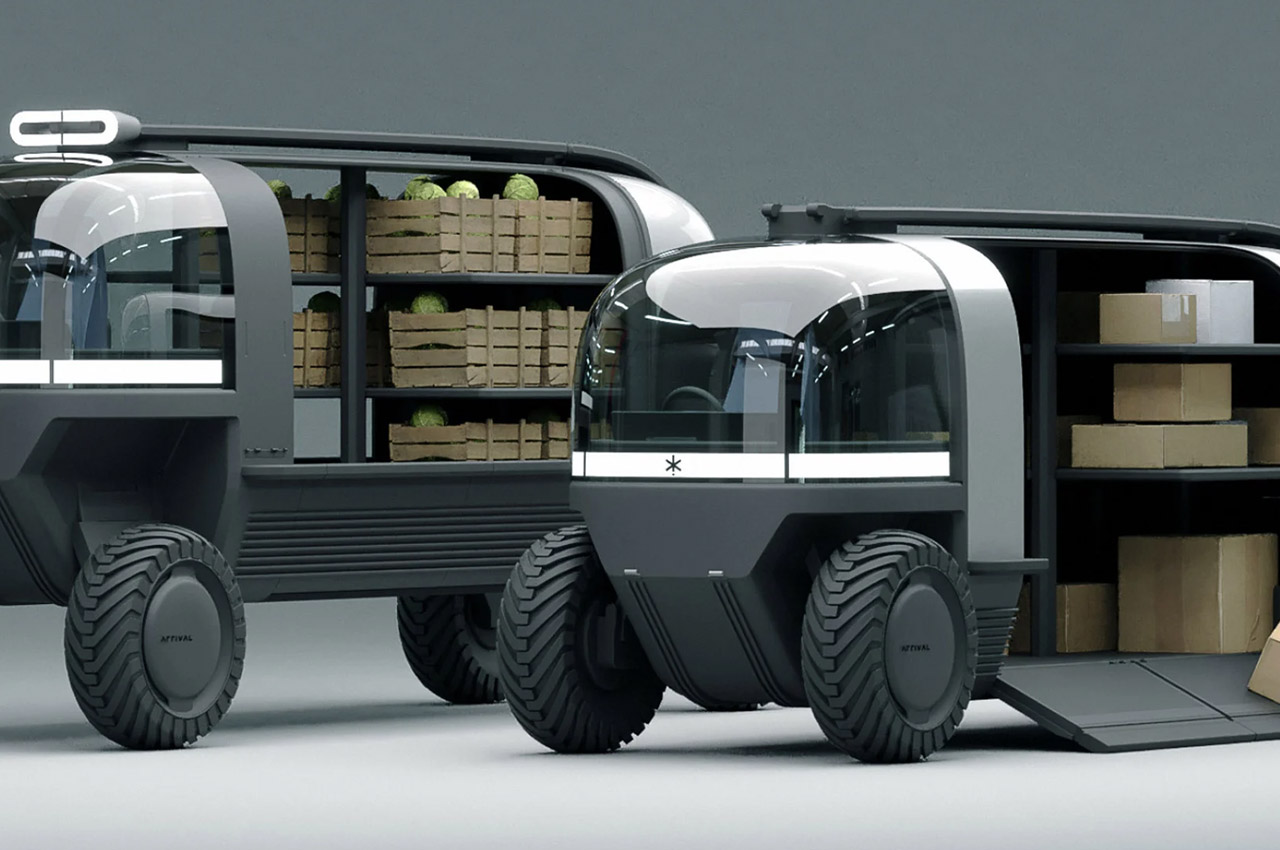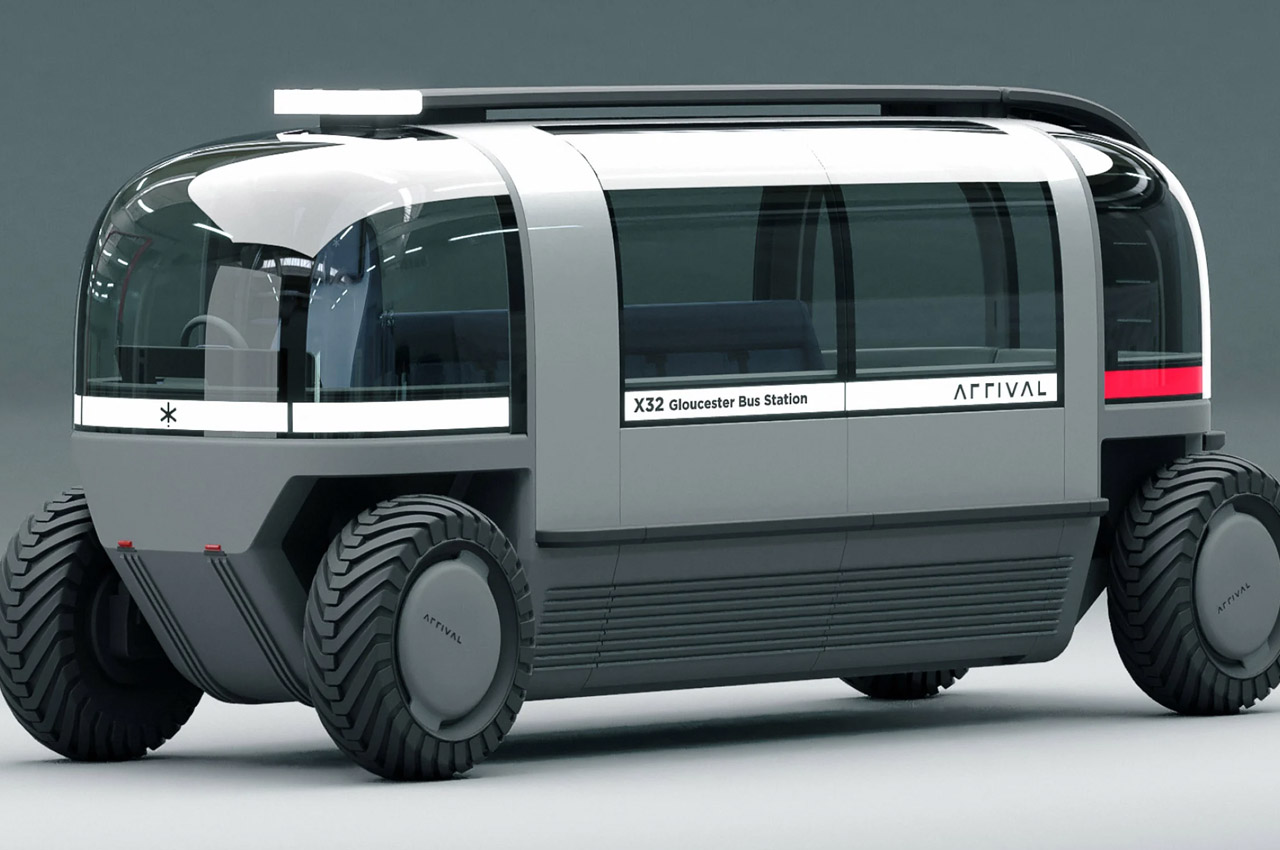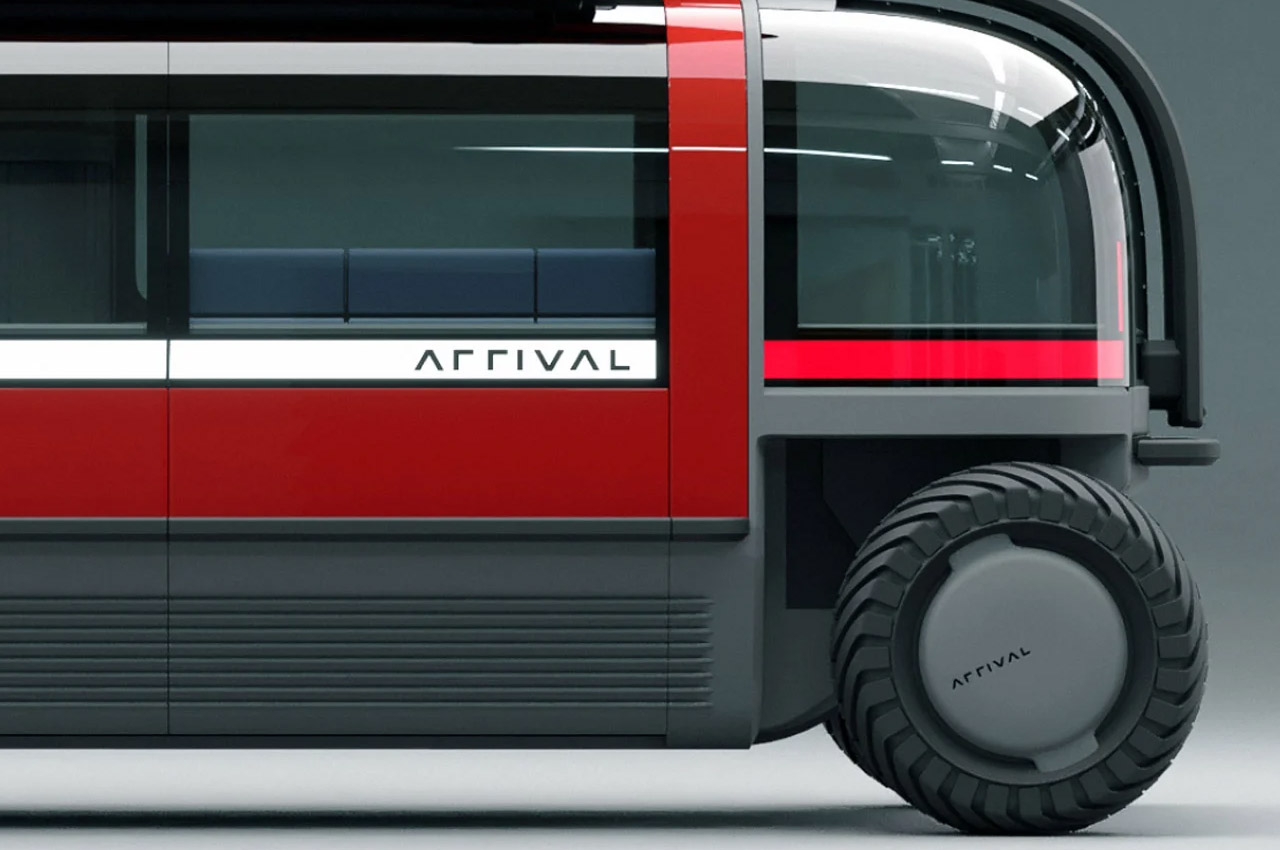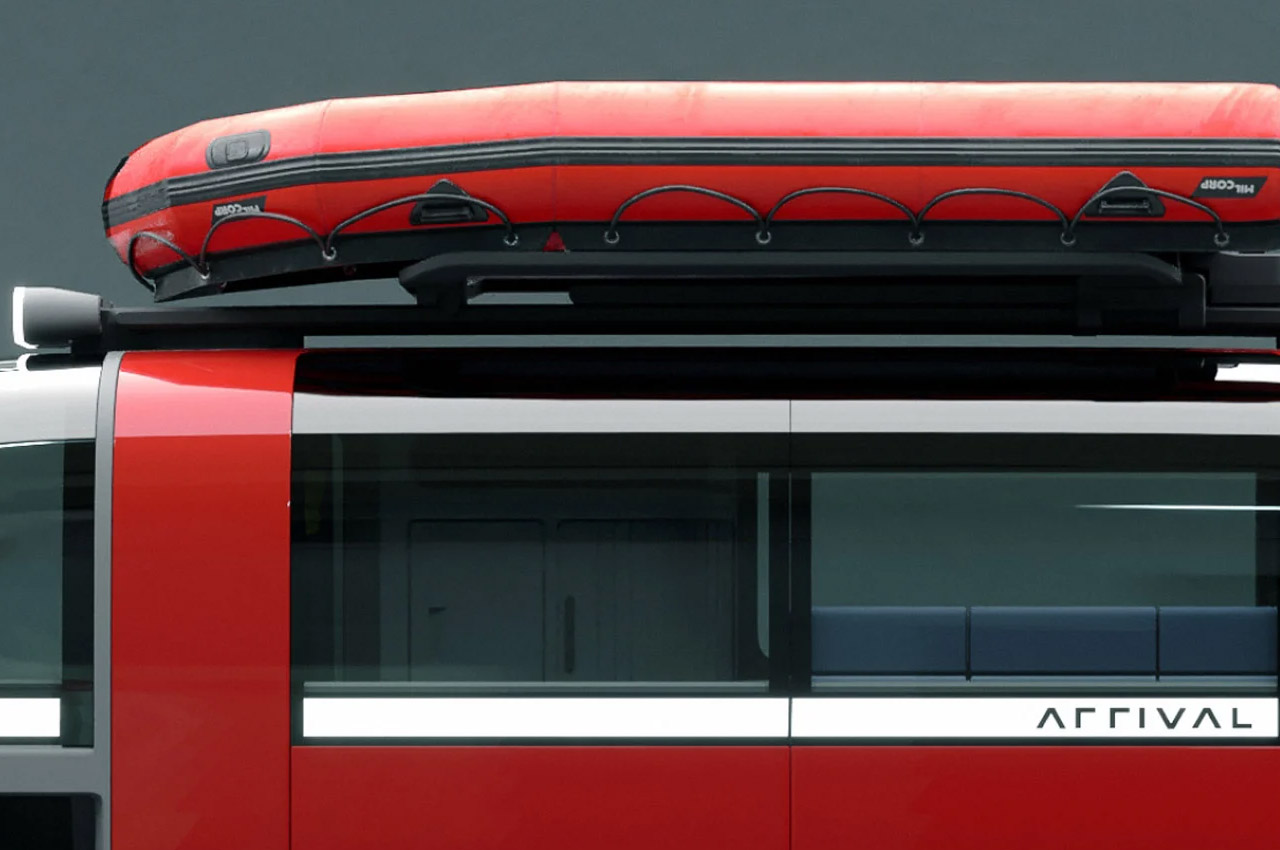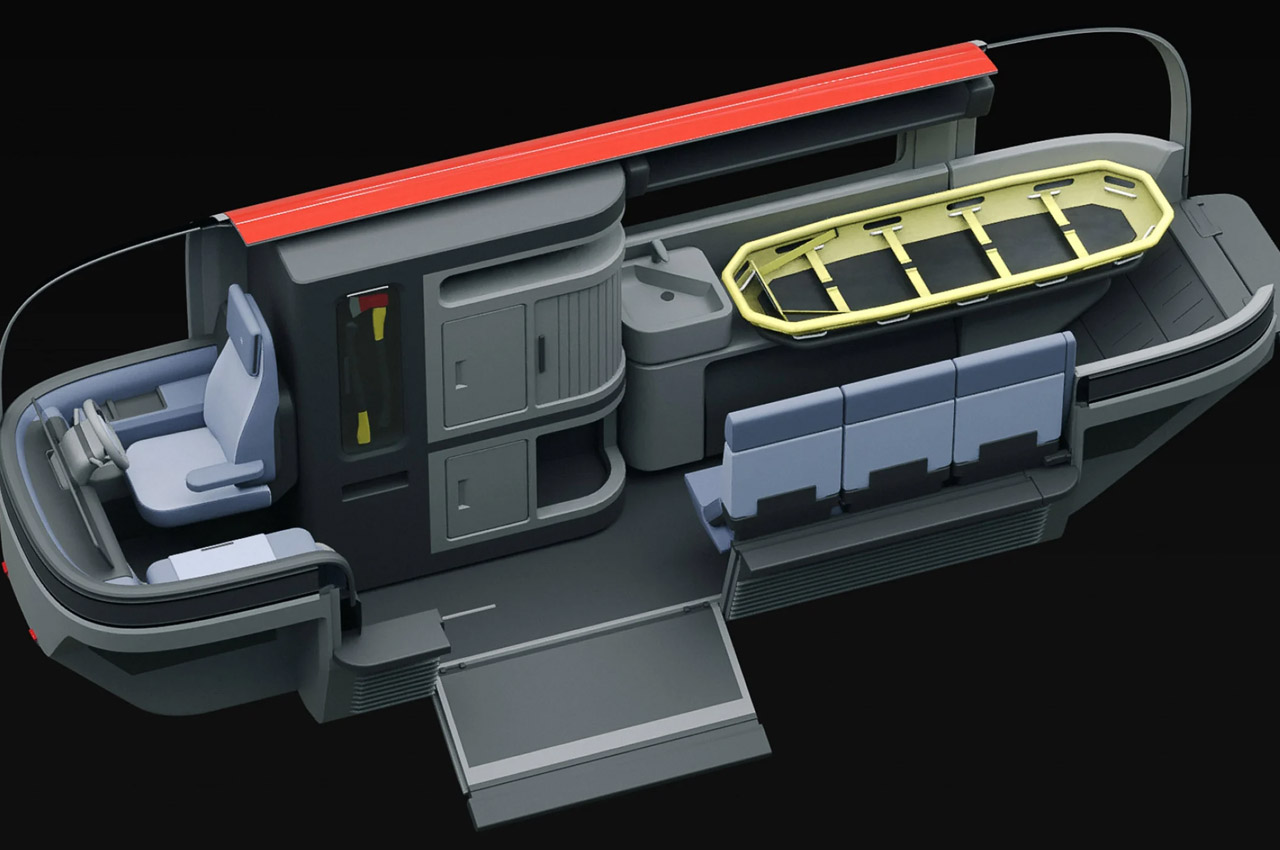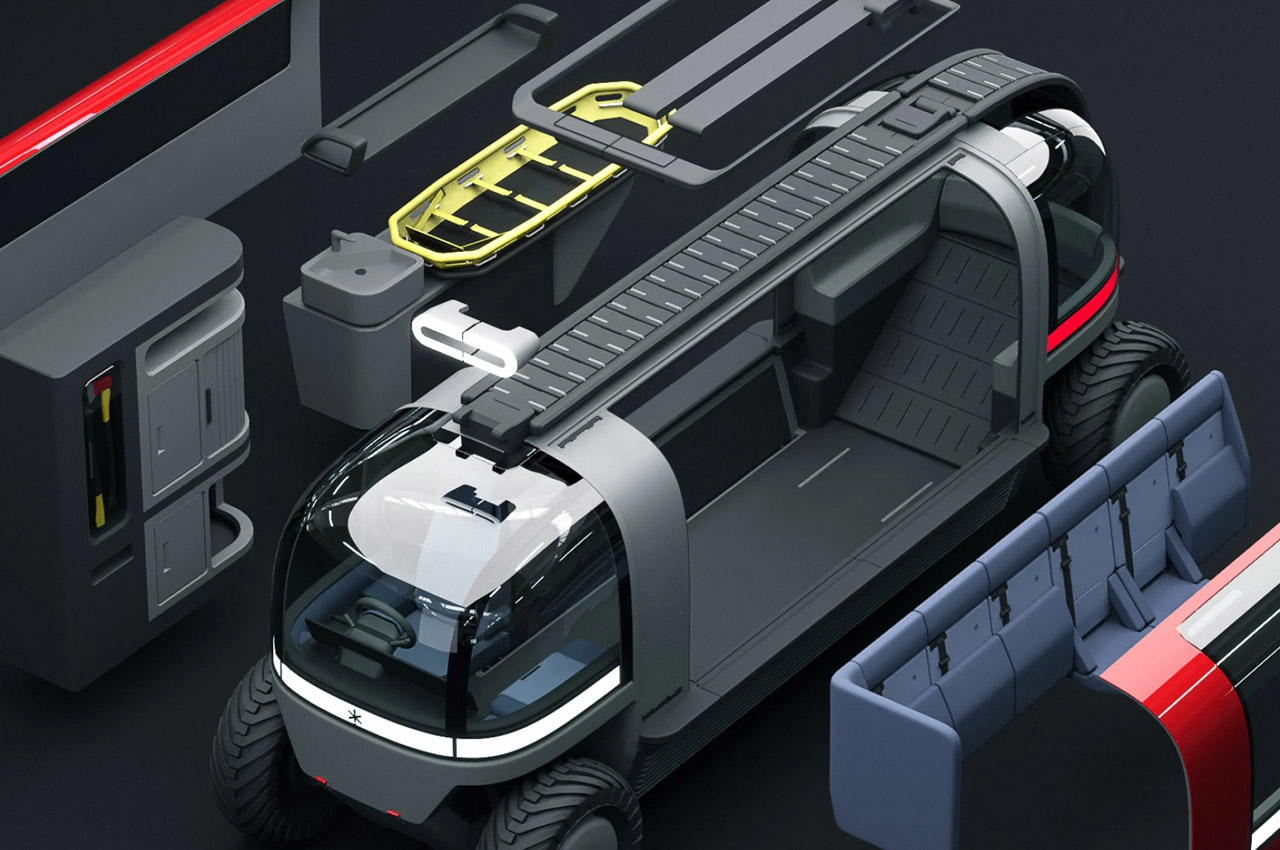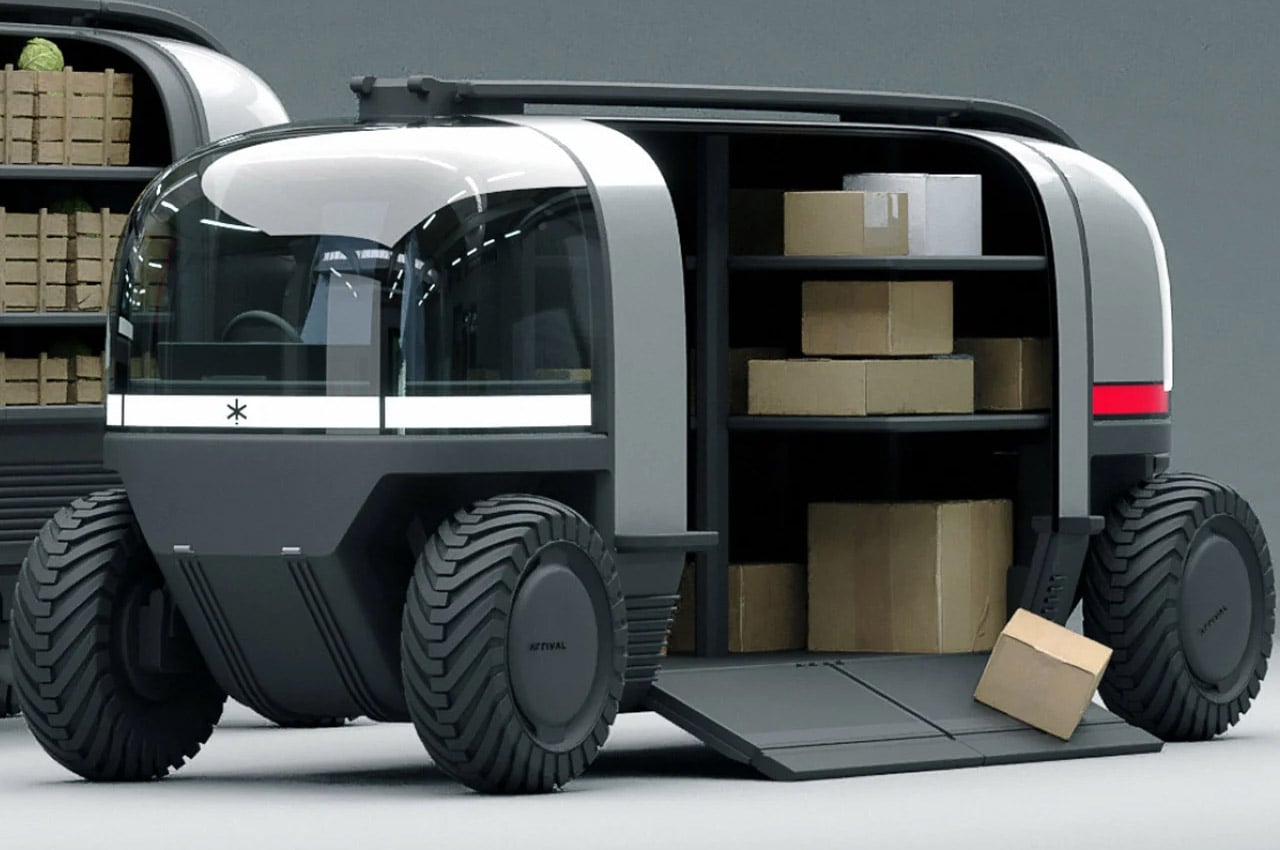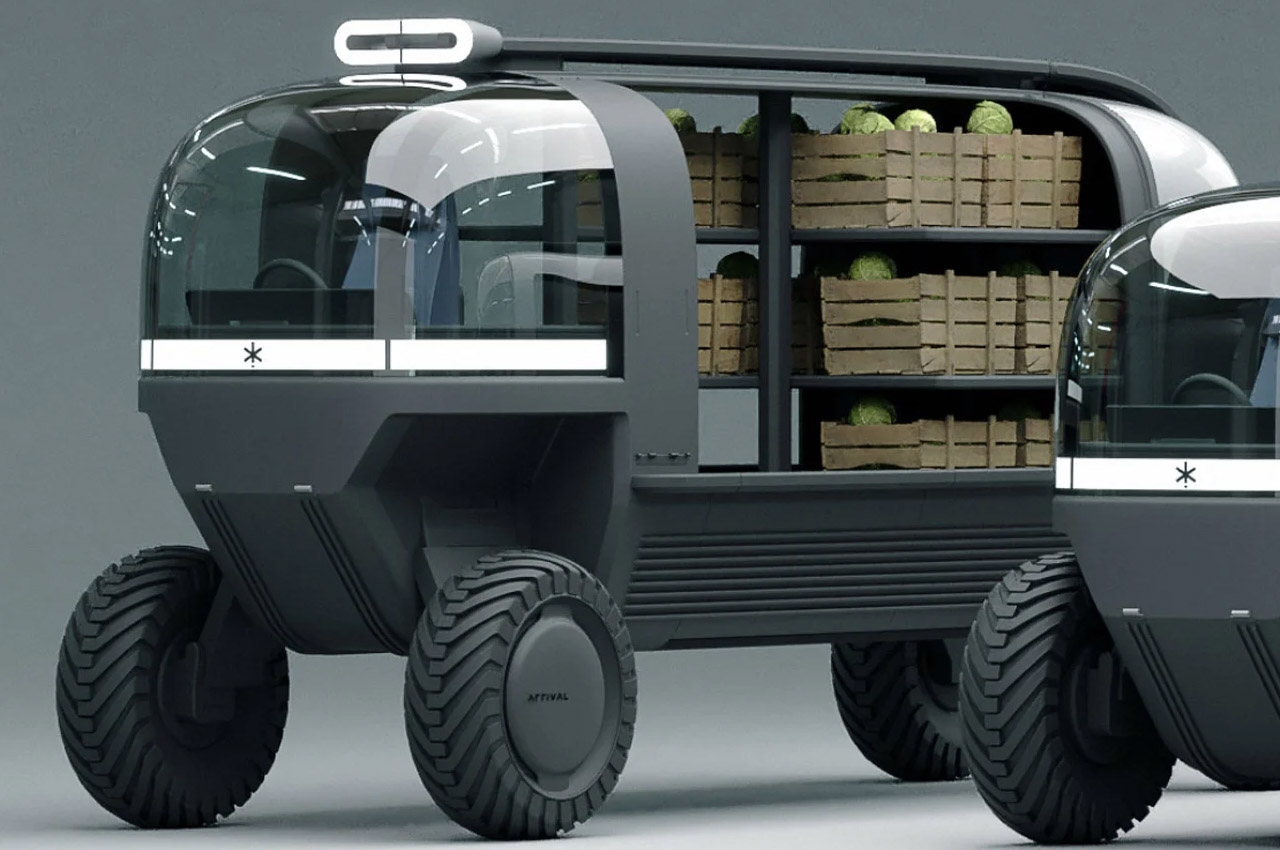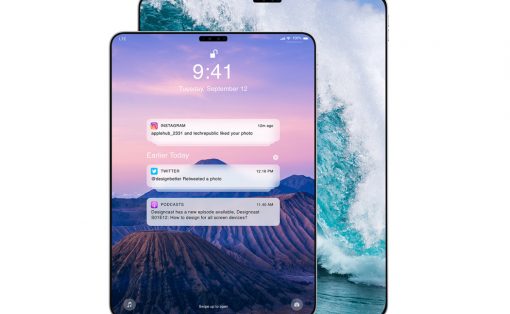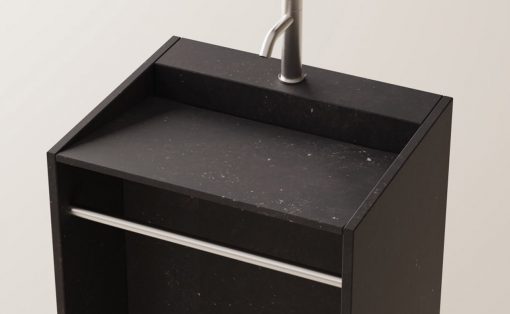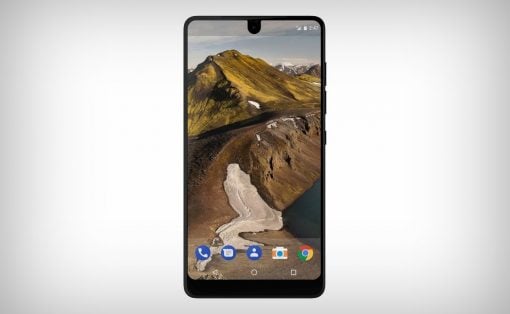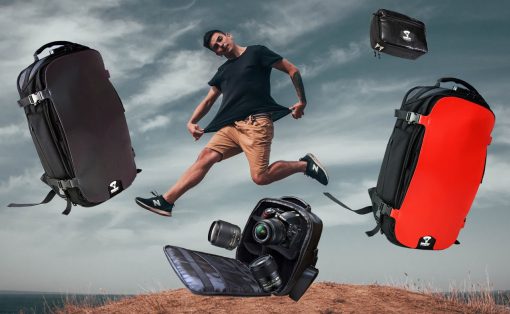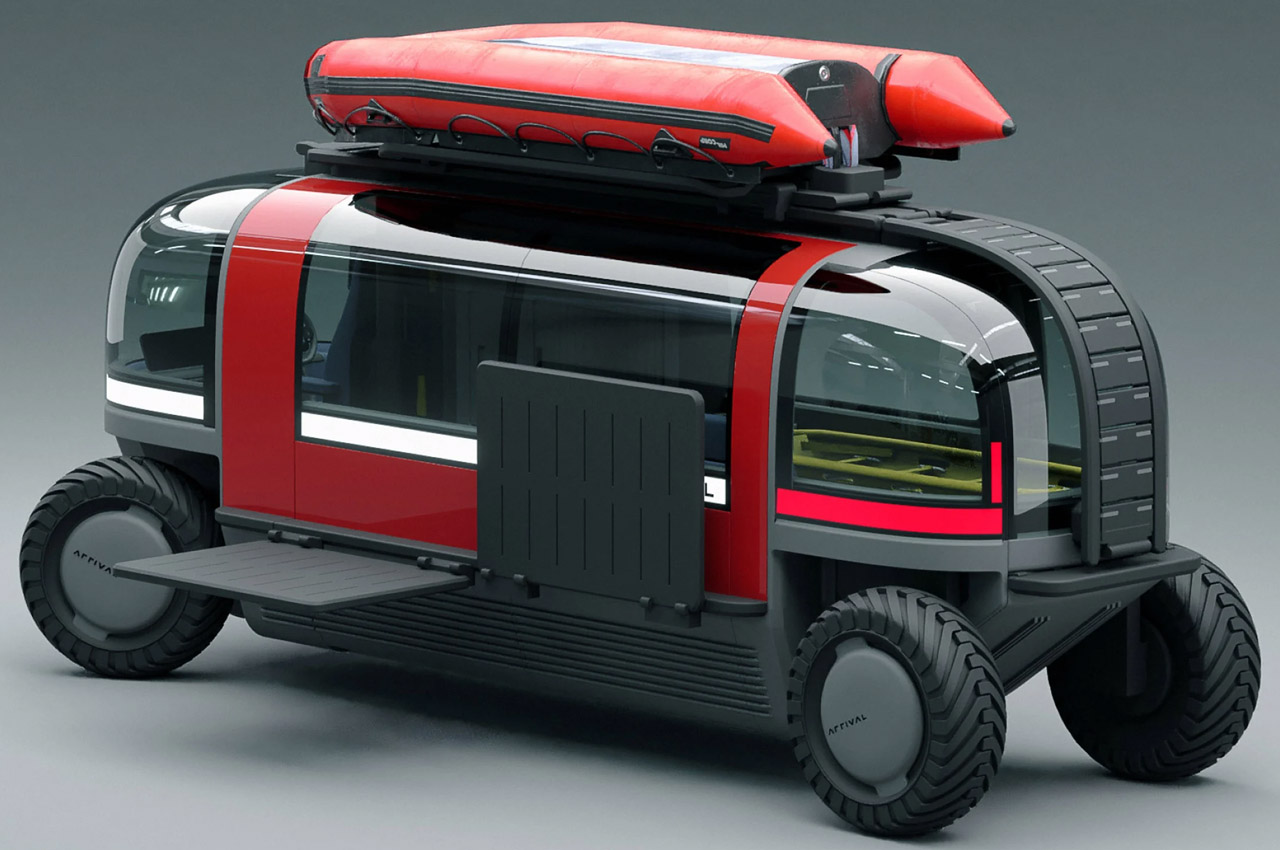
The automotive world is gradually focusing more on multipurpose vehicles that serve other useful purposes rather than just getting from point A to B. Amphibious designs is one way of doing it, and the Estuary Hopper by Jordan Barnes is an excellent example of a feasible craft.
This concept designed in collaboration with electric vehicle company Arrival is more sided towards the semi-amphibious built category with its swift transforming aesthetics. To be precise, the Estuary Hopper is a city bus on any ordinary day, but as things turn ugly, the reliable public transport turns into a potent emergency response vehicle. The designer envisions it to bring dual mobility across the Gloucestershire floodplain. The Amphibious chassis of this cool bus adapts to the rising water levels to propel forward even on waterlogged surfaces.
Designer: Jordan Barnes and Arrival
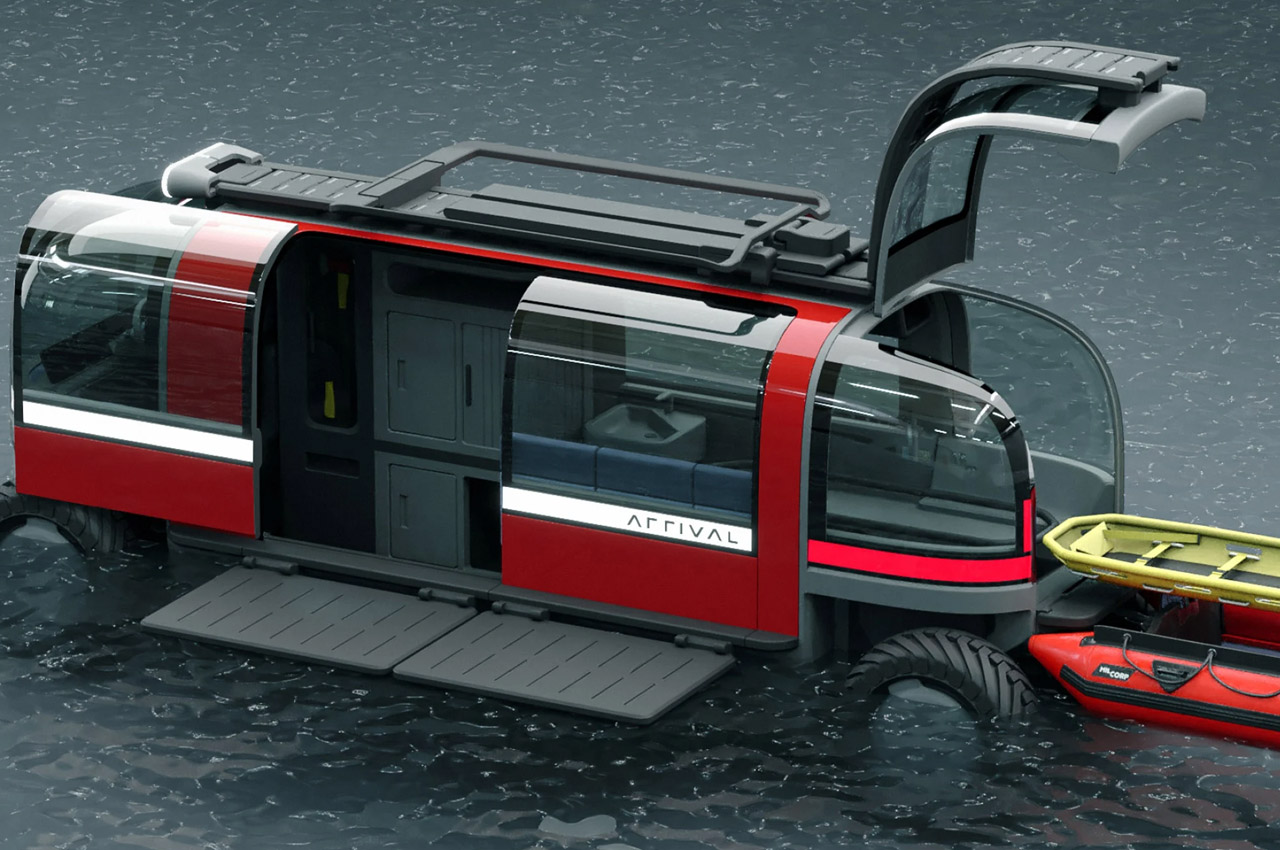
In the event of an emergency like a flash flood when the River Severn rages, the public transport comes on its own thanks to the amphibious chassis. The large rugged tires provide the needed traction to move forward even in the most treacherous flooding conditions. There are attachments included like the exterior pontoons that can be hooked on to the stills. This way the vehicle adds extra space to haul loads or rescue people.
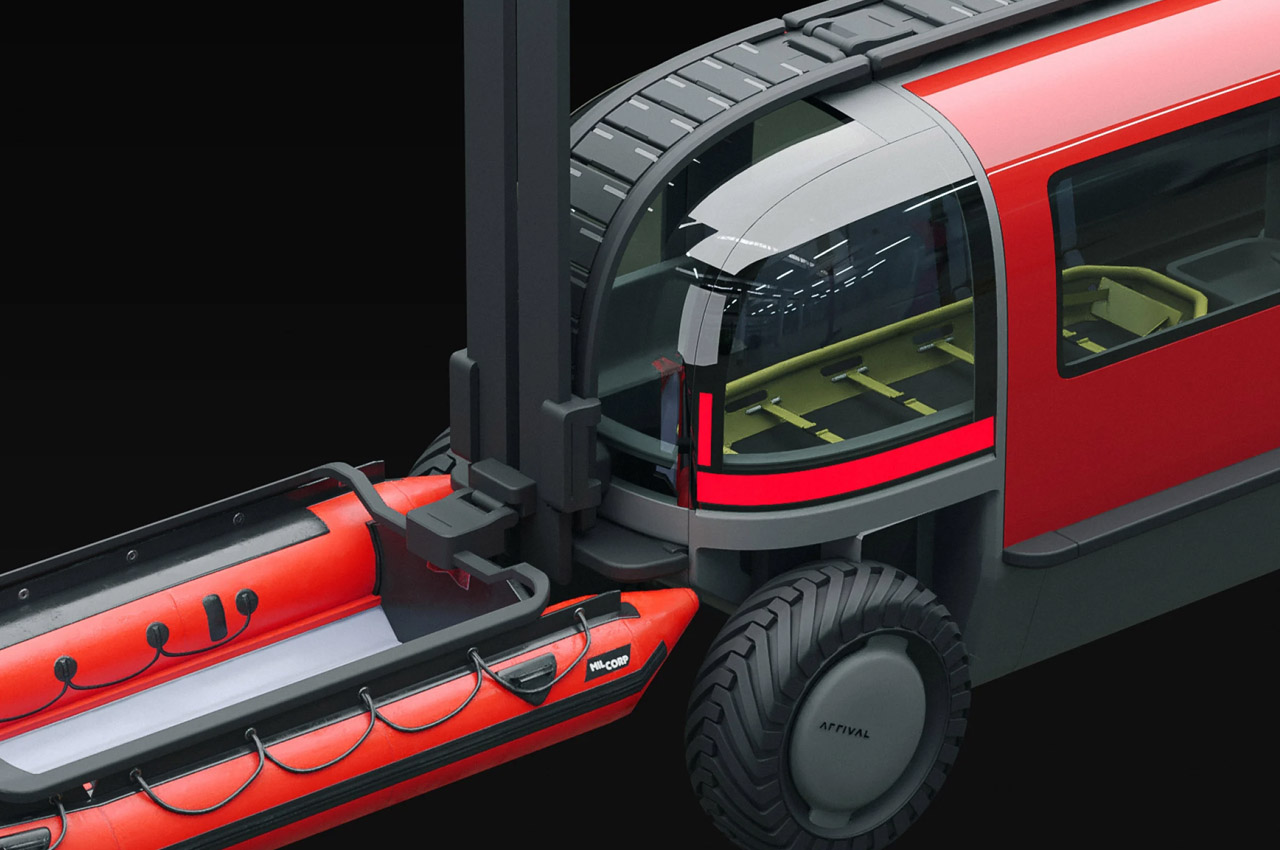
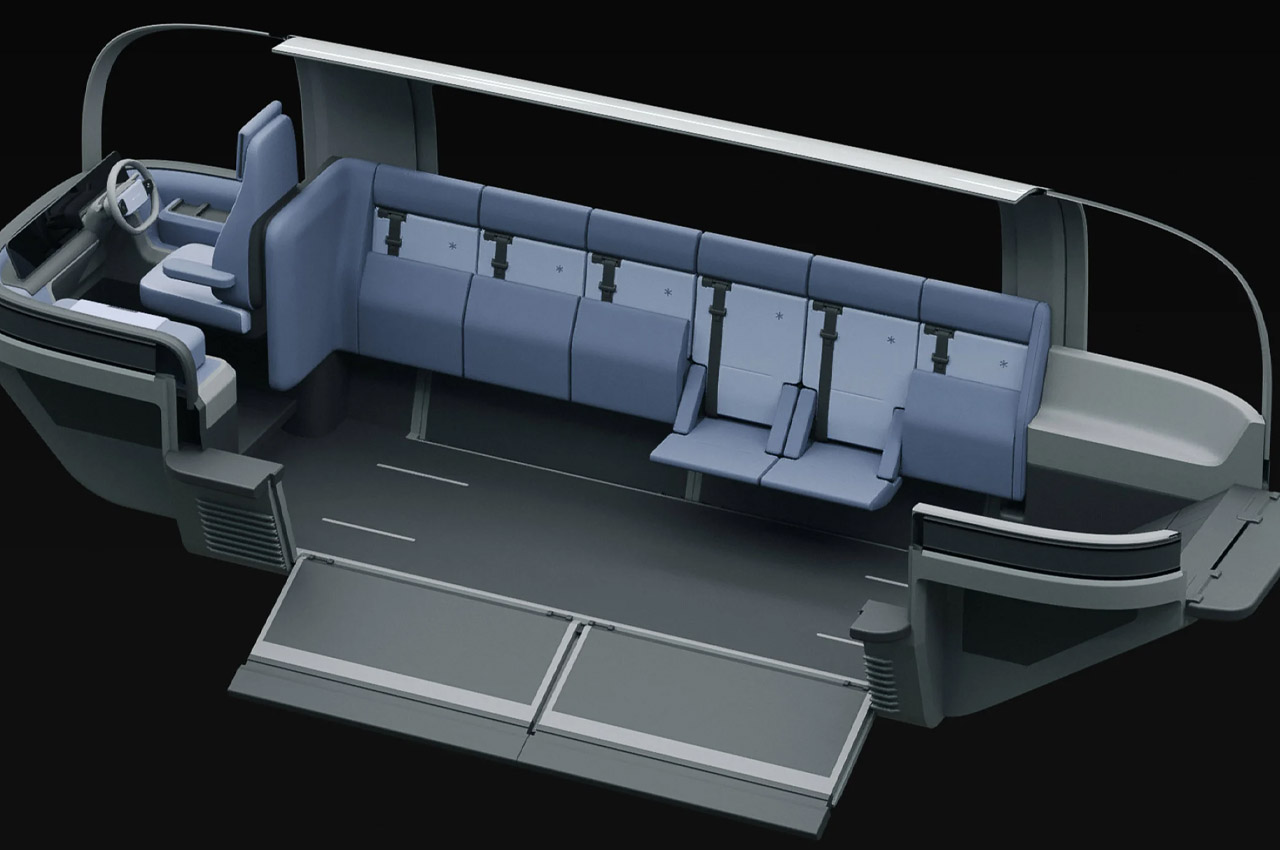
To take on the fury of nature, the vehicle has a central spine running along the length to support the interior blocks and the modular panels. This also permits flexible configurable setups – for example, the mid-sized bus for the usual commute and the narrower setup for movement through narrow spaces. There’s an added row of folding seats along the side to provide more space and aid in loading wheelchairs or luggage. To top it off, the Estuary Hopper bus has a very attractive form that’s way ahead of the current time. Perhaps it is designed keeping in mind the future of mobility that’ll be dominated by a fleet of multipurpose vehicles – both on land and on the waters. Let’s not forget the air too with flying cars coming on their own in the last five years or so!
